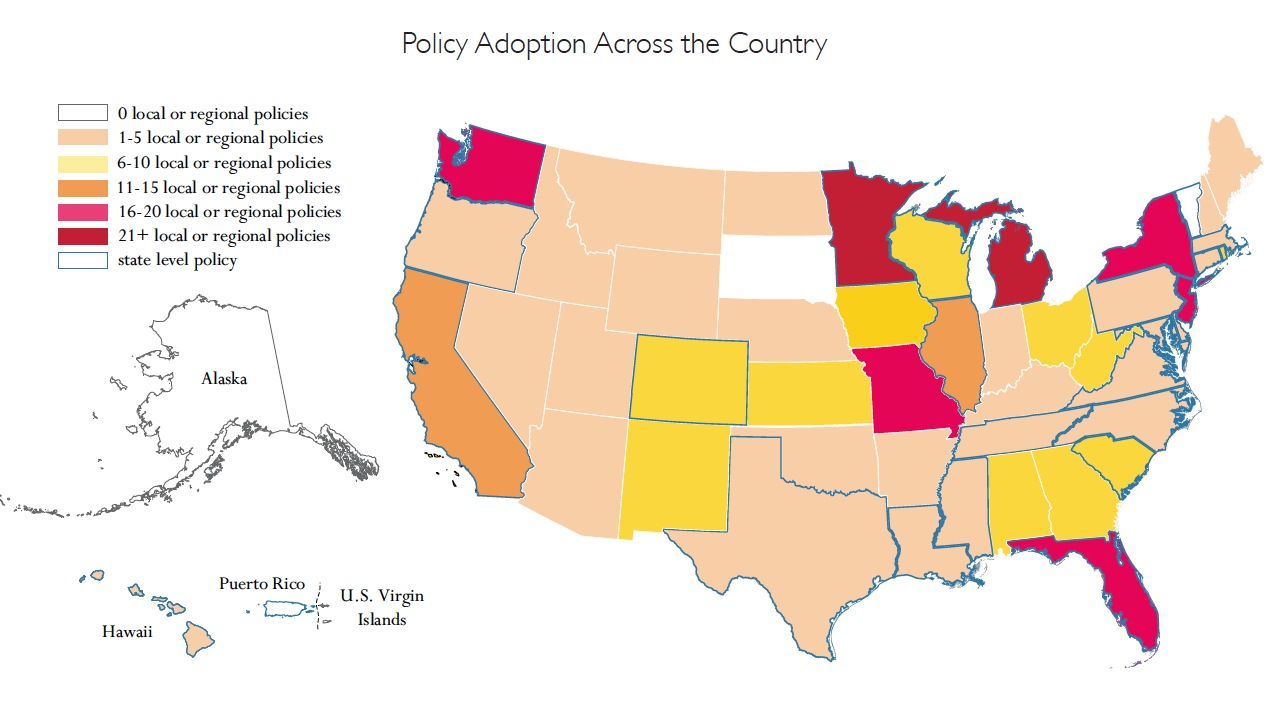SMART GROWTH AMERICA
Executive Summary
Hundreds of communities of all sizes, in all parts of the country, see their streets as something more than just a way to move people in cars from point A to point B. More than 350 have adopted Complete Streets policies – with 146 of those policies adopted in 2011 alone. These communities have joined a growing national movement for Complete Streets, a movement that encourages and provides for safe access to destinations for everyone, regardless of age, ability, income, ethnicity, or mode of travel.
A Complete Streets approach redefines what a street is intended to do, what goals a transportation agency is going to meet, and how the community will spend its transportation money. It breaks down the traditional separation of ‘highways,’ ‘transit,’ and ‘biking/walking,’ and instead focuses on the desired outcome of a transportation system that supports safe and universally inclusive roadway use.
This report documents the growth of that diverse movement and its strengths by analyzing the more than 350 existing written policies adopted by states, regions, counties, and communities before January 1, 2012. Policies that come closest to meeting the ‘ideal’ are highlighted. Used in conjunction with the Complete Streets Local Policy Workbook, this report is also a useful tool for communities looking to develop their own Complete Streets policy based on current best practices. Many examples in this report come from policies adopted in 2011, in part because so many strong examples were adopted last year.
Nation Embraces Complete Streets
Complete Streets policy adoption continues to accelerate rapidly: 146 communities adopted policies in 2011, compared to the 80 new policies we analyzed at the end of 2010. By the start of 2012, more than 350 policies were in place at all levels of government, directing the transformation
of community transportation networks into Complete Streets. Over half of state governments or Departments of Transportation (26) had some form of Complete Streets policy, and more than 20 percent of cities with over 100,000 residents had also committed to this approach. Policy adoption is remarkably widespread: just two states are without a Complete Streets policy at any level of government, while ten states have more than 15 policies on the books.
The movement is not limited to states or large cities; communities of all sizes find these policies valuable. Over onethird of all policies were adopted in suburban communities of fewer than 30,000 residents. Small towns, often in rural areas, are well represented: nearly one in five of all Complete Streets policies were adopted in these jurisdictions.
Download full report (PDF): Complete Streets: Policy Analysis 2011
About Smart Growth America
www.smartgrowthamerica.org
“Smart Growth America advocates for people who want to live and work in great neighborhoods. We believe smart growth solutions support businesses and jobs, provide more options for how people get around and make it more affordable to live near work and the grocery store. Our coalition works with communities to fight sprawl and save money. We are making America’s neighborhoods great together.”







 RSS Feed
RSS Feed